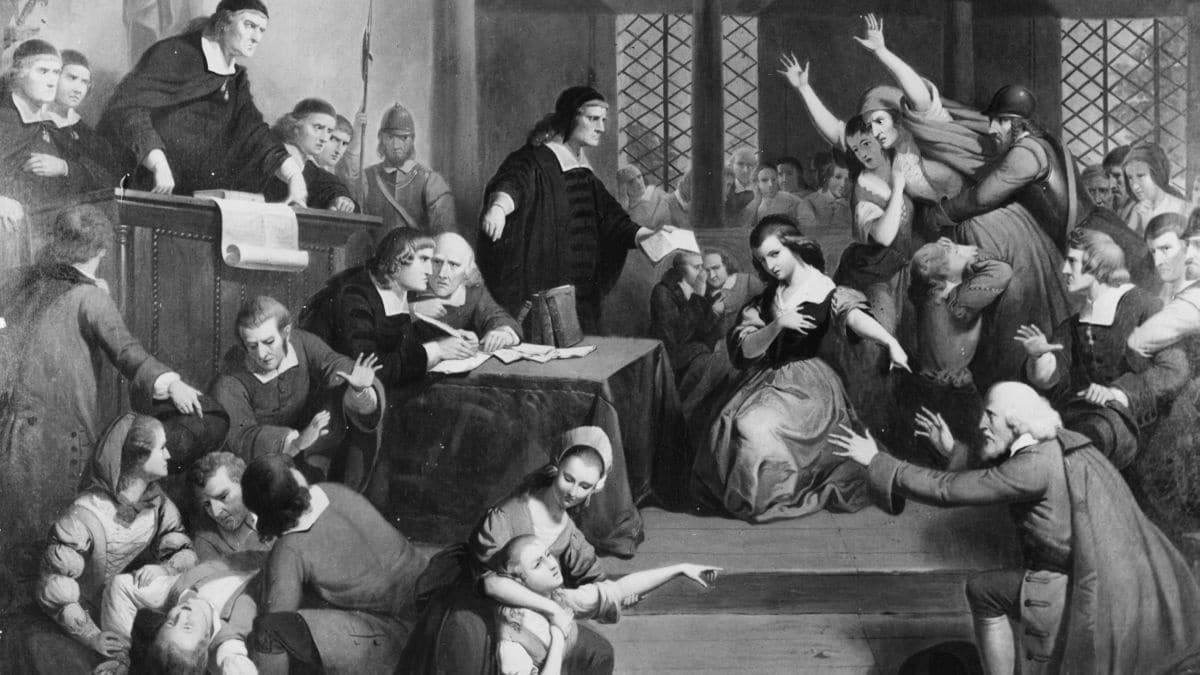Elizabeth Parris was one of the young women who accused other people of being witches during the Salem witch trials. The accusations made by Elizabeth and her cousin Abigail Williams caused the direct death of 20 Salem residents: 19 were hanged (mostly women), and one man was pressed to death.
Early Life
Elizabeth Parris was 9 years old at the beginning of 1692. She was the daughter of Reverend Samuel Parris and his wife Elizabeth. Young Elizabeth acquired the shorter name of Betty to distinguish her from her mother.
In 1692, her family consisted of her older brother Thomas and younger sister Susannah. Also part of the household was Abigail Williams, who was 12 years old and called a niece of Reverend Parris. Also within the household were Tituba and John, who are described as Indians and were from Barbados.
An African boy slave had died a few years prior to the
Elizabeth's father was the minister of Salem Village church. He came to the village in 1688 and had been in the middle of a controversy that lasted until 1691 when a group organized to refuse to pay him a significant part of his salary.
When this occurred, Reverend Parris took the pulpit and began to preach that Satan was conspiring in Salem to destroy the church.
Salem Witch Trials

Shortly after Samuel Parris' affairs with the church in 1692, his daughter Elizabeth Parris and niece Abigail Williams seemed to go missing for short periods of time. "...along with other New England youth, "Elizabeth and Abigail had been led away with little Sorceries." Elizabeth, Abigail, and the girls attempted fortune-telling methods during their missing periods in hopes of discovering future husbands and social statuses.
They used an object called a "Venus glass," which allowed them to observe the shape of an egg white as it floated in a glass of water. In the water, the egg white would resemble a shape or symbol depicting their futures.
In one instance, a girl found a coffin shape inside her glass and became quite frightened after the incident.
In February 1692, strange illnesses appeared after the girls tinkered with fortune-telling. Elizabeth acted abnormally by hiding "...under furniture, complained of fever, barked like a dog, and screamed and cried out of pain," and her body convulsed into inhuman-like positions. Abigail complained of similar symptoms shortly after Betty's episodes.
Betty's father tried prayer and home remedies as a cure, but nothing helped. Soon enough, he called in physician William Griggs and minister John Hale for a diagnosis. Both agreed that Elizabeth and Abigail were suffering from witchcraft.
There are more logical reasons the girls fell under these illnesses. One thought was concluded as a compilation of disorders such as asthma, stress, epilepsy, and even boredom. Others believe it was caused by ergots in the rye, which have been known to cause similar symptoms.
Elizabeth's other friends were also beginning to show similar symptoms of bewitching. Griggs found it difficult to key in on an exact cure and noticed the victims were only children. This enabled other villagers to believe that this event was indeed brought on by witchcraft.
A neighbor, Mary Sibley, recommended a witch's cake to reveal the names of the witches. She instructed Tituba to bake a rye cake with the victim's urine and feed the cake to a dog. Dogs were believed to support witches and their supernatural powers by following the witches' requests.
Without alleviation of the illness, Betty eventually named Tituba one of the 'Evil Hands.' Linder suggests Elizabeth and Abigail wrote their story before making any accusations, allowing their scenario to be more realistic.
In the meantime, Tituba underwent questioning, and other victims, such as Ann Putnam Jr. and Elizabeth Hubbard, began to name their culprits as well.
Other specified witches, including Sarah Osborne and Sarah Good, were questioned. All three would likely have had few if any, advocates on their behalf due to their low social status in Salem. During their trials, Tituba confessed, as well as turning in the other two women.
Later that year, in March, Elizabeth dreamed about a "Black Man" who she presumed was the Devil. He wanted her to join his forces and to be "ruled by him."
However, Elizabeth's family found this extremely terrifying and sent her off to live with another family, the Sewalls, hoping she could get away from witchcraft.
In the Sewall household, Elizabeth did experience some symptoms but ultimately regained full health.
Later Years
The trials were over in 1693. Most folks were disgusted by what happened and what they allowed to happen to their neighbors.
However, Elizabeth Parris never retracted her accusations or showed any empathy for what she helped cause.
She married Benjamin Baron. The two had four children and lived a long life together. She survived her husband by 6 years and died on March 21, 1760, in Concord, Massachusetts, aged 77.
Return to List of People who Participated in the Salem Witch Trials.
